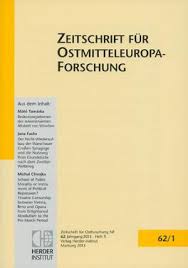Landscape Interventions? The Draining of Wetlands and Other Modernization Initiatives in West Polesia from 1921 to 1939
Landscape Interventions? The Draining of Wetlands and Other Modernization Initiatives in West Polesia from 1921 to 1939
Author(s): Diana SiebertSubject(s): Agriculture, Energy and Environmental Studies, Human Geography, Environmental interactions, Interwar Period (1920 - 1939)
Published by: Verlag Herder-Institut
Keywords: Polesia; wetland; melioration; fishing; Republic of Poland (1918-1939); agriculture; agriculture reform; land consolidation;
Summary/Abstract: Polesia was still Europe’s largest swampland area in the first half of the twentieth century. The western part formed the voivodeship of Polesia, which belonged to Poland and was inhabited mainly by Eastern Slavs (in rural areas) and Jews (in the cities and shtetls). Considered a terra non grata until the nineteenth century, political and state actors and others closely associated with the government now began to conceive, prepare and carry out modernization measures in order to develop the region’s agricultural constitution, structure and production. Some of their arguments were explicitly “apolitical.” Until 1939, land consolidation measures and, in part, the dissolution of easements were successfully carried out. On the other hand, the planned settlement of ex-military personnel, the partial expropriation and parcelling out of land and the melioration of swamps were only achieved on a relatively small scale. Over one million hectares of wetlands were to be meliorated in a single large-scale project. However, this only succeeded to a limited extent. Such a mammoth interventionist undertaking first faced technical and organizational difficulties; secondly, there was a lack of funds; thirdly, there were a number of interventionist projects in Central Poland and on the Baltic Sea that were considered more important; and fourthly, the local farmer-fishermen were not enthused by the prospect of melioration, as the areas of “improved” land were to benefit non-locals and the transition to grain production would reduce wildlife and fishing areas.
Journal: Zeitschrift für Ostmitteleuropa-Forschung
- Issue Year: 68/2019
- Issue No: 3
- Page Range: 369-399
- Page Count: 32
- Language: English

